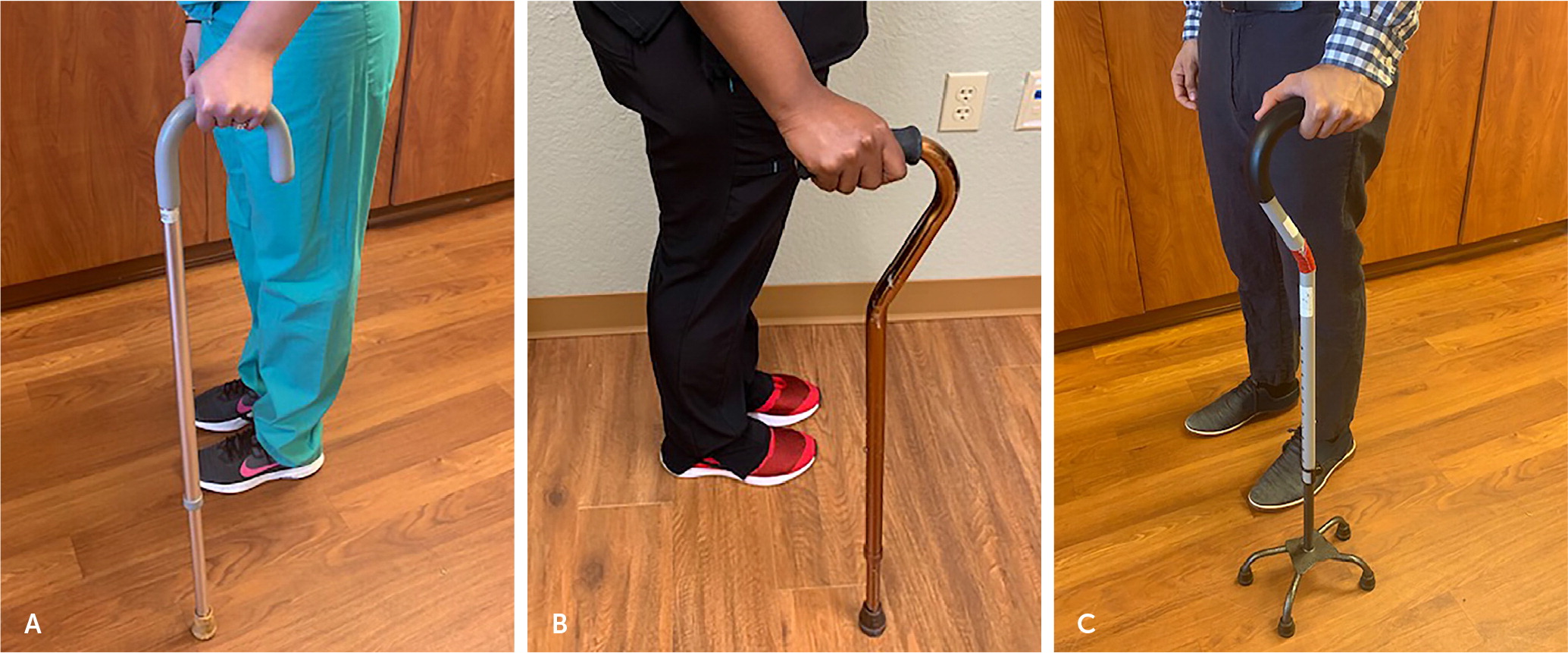Slips and falls are one of the leading causes of hospitalisations for people aged 65 and over. As we age, we may find ourselves needing a little extra support when walking. And mobility aids like walking sticks, walking canes, and crutches may become an essential part of our daily lives. There is a wide range of mobility devices, but two popular, non-intrusive, and simple types are walking sticks and canes. While they may seem similar, it also raises the question: What is the difference between a walking stick and a cane?
What is a Walking Stick and a Walking cane?
Walking Stick - A walking stick is a long, slender stick that is used for support while walking. A temporary device primarily used for stability and balance when climbing or walking on rough terrains. They can be made of wood or metal, they are adjustable in height, foldable and lightweight.
Walking Cane - A walking cane is a mobility aid used for support while walking, slightly shorter than walking sticks. It is designed to take the pressure off a painful joint on a long-term basis. Walking canes are often used by people with mobility issues, such as those with arthritis or injuries. It is typically made of metal or wood and has a curved handle for grip. It’s strong and durable and gives good stability.
Is it better to use a Walking Stick or a Walking Cane?
The difference between walking sticks and canes is their purpose. Walking sticks are used for stability and balance while walking on uneven terrain, while Walking canes are used for support and balance for those with mobility issues.
Here are some essential factors to consider when deciding.
- Lifestyle
If you are someone who goes out every day and needs support while walking, then use a walking cane. They are designed to regularly take your full weight and act as a mobility aid, perfect for everyday use. But if you are only looking for something to assist you on short walks or hikes, you’ll want to use a walking stick. It provides some stability during shorter periods of time.
- Your Weight
If you are on the heavier side, walking canes are perfect as they are specifically designed with weight capacities to ensure they can provide full support to users. Walking sticks on the other hand, cannot take on too much weight.
- Are you after Comfort or Style?
If your main purpose is to use the assistance of a mobility aid to avoid falling or injuring yourself, the cane is your better option. This includes the elderly, those with injuries, or those who have less strength in their lower body. They are mainly designed for these purposes and are comfortable. However, if you are into good designs and style, and at the same time provide you with some level of support while doing certain activities and provide comfortability, a walking stick should get the job done.
How Do You Use a Walking Stick to Walk?
Walking sticks are essential mobility aids for many people. But like any mobility aid, walking sticks should be used with care. Before getting started, it’s worth taking the time to learn how to use the assistive device safely and prevent injuries by following the gudie from the Friendly Societ Hospital's How to Use Walking Stick Safely:
- Position the walking stick forward at the same time as stepping forward with the injured or weak leg. The leg and the cane should move together at about the same angle.
- Position the stick forward and slightly to the side.
- Place all points on the ground at the same time. Keep the stick close to your body, not too far ahead or too wide, especially when getting started. With three or four-point sticks, the straight side should be nearest the body.
- Take your time moving and don’t turn too quickly.
- Be careful when walking over uneven, soft or wet ground.
- Look ahead to watch where you are going rather than down at the floor.
- If you’re using a three or four-point walking stick, be careful the legs don’t become a trip hazard.
Using a walking stick on stairs or gutters:
- Hold onto a handrail for support if possible.
- Place the walking stick on the opposite side to the handrail.
- Step up with the strongest leg first.
- Then step up with the other leg and walking stick simultaneously.
- When stepping down, place your walking stick on the step below and move your weak leg first. Bring both feet onto the same step before taking the next.
How Do You Use a Walking Cane to Walk?
As stated by Healthline's Guid on How to Walk with a Cane, the proper way to walk with a cane includes holding it on the opposite hand from the side needing support and moving it at the same time as you step forward with the affected leg
- Hold your cane in the hand that’s opposite the side that needs support.
- Position the cane slightly to the side and about 2 inches forward.
- Move your cane forward at the same time as you step forward with your affected leg.
- Hold the cane steady in place as you walk forward with your unaffected leg.
- Ask someone to supervise you and possibly help support or stabilize you when you’re first getting comfortable walking with your cane. Make sure you feel fully confident before you venture out on your own.
- Speak up if you ever find yourself in need of assistance while using your cane. Come up with a plan for what you’ll do if you find yourself in this situation.
Using walking cane on the stairs:
Use extra care when you navigate steps or a curb with your cane.
- Hold onto the handrail for support.
- If only one of your legs is affected, step up with your unaffected leg first.
- Then, step up at the same time with your affected leg and cane.
- To walk down the stairs, put your cane on the lower step first.
- Then, step your affected leg onto the step, followed by your unaffected leg.
What Are The Types of Walking Stick?
According to teh article Guide To Choosing and Using a Walking Stick, there are a range of different walking sticks available to suit different needs:
- Crook handle – a crook handle is a basic style of walking stick featuring a curved handle on a straight shaft.
- T handle – a T-shaped handle is a straight style walking stick with a handle that sits horizontally to the ground. Often has a slight contour for easy grip.
- Swan neck – a swan neck features a curve or bend just below the handle. This allows the user’s weight to be centered more evenly over the shaft for better stability.
- Palm grip – a palm grip is specially designed for people with arthritis or poor grip. The flat handle design disperses pressure evenly across the palm of the hand.
- Quad base – a quad base is a walking stick that has four separate feet coming off the central shaft, instead of just one. It offers improved stability and support, but can be more difficult to use. Can stand on its own without having to be leaned against anything when not in use.
- Foldable walking stick – similar to the standard T-style walking stick, however folding walking sticks feature a foldable frame that can be stored in a small bag when not in use. Great for travelling or intermittent use when out and about.

What Are The Types of Walking Canes?
According to the article Mobility Assistive Device Use in Older Adults, three major varieties of canes are available and offer a range of support.
- Standard cane: Of the three types of canes, two types are considered "single point" canes; the standard cane and the offset cane. Additionally, single point canes provide the least amount of stability, but are also the least restrictive assistive device.
- Offset cane: The function of an offset cane is similar to the standard cane, but the handle has a straight grip with an offset angle so that the weight-bearing line goes straight down through the cane shaft. This weight-bearing alignment improves support and balance, and the handgrip is more comfortable for most patients than the standard cane. An offset cane is often more expensive than a standard cane.
- Quadriped cane: A quadripod cane has a larger base of support than standard and offset canes (Figure 2C). Its four legs provide better stability and increased weight-bearing through the upper limbs. The quadripod cane can stand on its own and may have a small or large base depending on the amount of support the patient needs.
We hope you enjoy reading our article about the Difference Between a Walking Stick and a Walking Cane. If you’d like to see more of our walking sticks and canes, you may find it in our walking sticks category.

Table taken from Mobility Assistive Device Use in Older Adults















